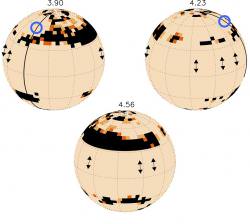Spotting flares on the surface of the Sun is easy. It’s right there, blazing in our skies. But watching flares erupt on the surface of a distant star, located 150 light-years away… now that’s a challenge. And yet, a team of European astronomers announce just such a discovery this week.
This accomplishment was made by a team of astronomers using the European Southern Observatory’s Very Large Telescope and ESA’s XMM-Newton X-ray satellite.
The astronomers were watching the star BO Microscopii, nicknamed “Speedy Mic” because of its rapid rotation. The star is slightly smaller than the Sun, and located about 10 million times as far away.
According to the press release, imaging the surface is crazy hard:
Trying to see spots on its surface is as challenging as trying to directly obtain a photograph of the footsteps of Neil Armstrong on the Moon, and be able to see details in it. This is impossible to achieve even with the best telescopes: to obtain an image with such amount of details, you would need a telescope with a 400 km wide mirror!
So how did they do it? They used a technique called “Doppler imaging”, which measures slight changes in the star’s light as it rotates. These changes can be mapped into spots and flares on the star’s surface as it turns.
Over the course of 142 separate observations, the team identified several flares. One flare lasted 4 hours long, and would have generated about a hundred times as much energy as the flares we see on the Sun.
Since BO Microscopii is much younger than the Sun, only 30 million years young, it can give us valuable clues about our star’s early history. Perhaps the early Sun was this active, and then settled down in later life.
Original Source: ESO News Release

